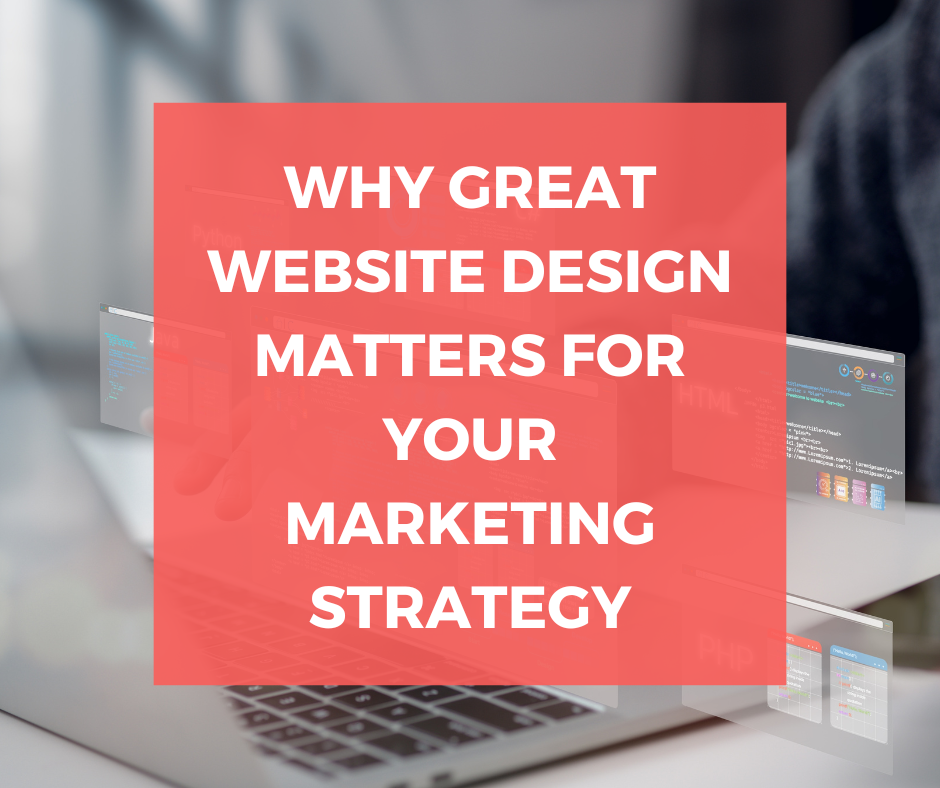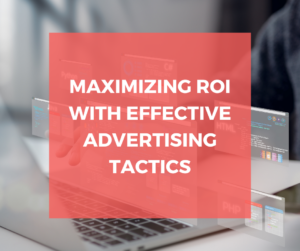
Spring Cleaning for Your Website: How to Refresh Your Online Presence
Spring is a season of renewal, making it the perfect time to refresh not just your home, but also your

Your website is your business’s digital front door. It’s often the first impression your potential customers will have of your brand. A great website design doesn’t just look good; it serves as a key component in your marketing strategy, driving engagement, conversions, and customer loyalty. Here’s why investing in great website design is essential for your marketing success.
When visitors land on your website, you have mere seconds to capture their attention. A poorly designed website can lead to a higher bounce rate because users may perceive it as outdated or untrustworthy. On the other hand, a well-designed site conveys professionalism, reliability, and relevance. These first impressions influence whether a user stays on your site or leaves—and whether they ultimately decide to do business with you.
A crisp layout, modern visuals, and intuitive navigation signal to users that your website, and by extension your brand, is worth their time. This initial impression sets the tone for their entire experience with your business. Skimping on design can cost you potential leads right from the start.
An engaging website design encourages users to interact with your content. Whether it’s blog posts, videos, products, or services, a clean design ensures content is accessible and easy to consume. Colors, typography, and visuals guide users’ eyes across your pages, drawing attention to key calls to action (CTAs) like “Sign Up” or “Buy Now.”
Interactive elements like clickable buttons, animations, and personalized content also enhance the user experience. Not only do these features make your website more dynamic, but they also keep users engaged longer, which can ultimately lead to higher conversion rates as they explore your offerings.
Website design and SEO go hand-in-hand. Search engines like Google factor user experience into page rankings, making an optimized website design critical for visibility. Poorly structured sites, slow load times, and unresponsive designs can harm your SEO efforts. Solid website design takes these considerations into account.
For example, intuitive navigation and mobile responsiveness make it easier for both users and search engine bots to crawl your site. Additionally, design elements such as header tags, image alt text, and clean code contribute to a more SEO-friendly website. The more discoverable your site is in search engines, the more organic traffic you’re likely to generate, boosting your marketing efforts.
Trust is a pivotal element in driving conversions. An attractive, professional-looking website instantly builds credibility. Users are more likely to trust businesses with websites that look polished, well-maintained, and free of errors. Outdated designs or broken links, on the other hand, raise red flags and can deter users from engaging further.
Consistency in design through cohesive branding, colors, and visuals also plays a significant role. When your site echoes the voice and tone of your brand, it reinforces trust in your visitors, making them more likely to become loyal customers.
With mobile devices accounting for a significant portion of web traffic, responsive design is no longer optional it’s mandatory. Whether a visitor is browsing on their desktop, smartphone, or tablet, your website must adapt flawlessly to every screen size.
An unresponsive site is a major turn-off for users and often leads to higher bounce rates. A successful mobile experience should include streamlined navigation, fast-loading pages, and easily tappable buttons to keep mobile users engaged. This doesn’t just improve usability; it amplifies your marketing reach, ensuring that more users can access your content seamlessly, no matter their device.
Behind every effective marketing strategy is an optimized conversion funnel, and website design plays a critical role in shaping it. Strategic design focuses on guiding users from the moment they land on your page to taking the desired action, whether it’s signing up for a newsletter, making a purchase, or requesting a consultation.
By placing CTAs in prominent positions and creating frictionless user journeys, great website design eliminates barriers between users and conversion goals. Elements like trust signals such as customer testimonials, secure payment icons, and satisfaction guarantees further motivate users to complete transactions.
Your website design should complement and enhance your content marketing efforts. An engaging design framework ensures blog posts, videos, infographics, and other content types are displayed effectively. Design tools such as white space, grids, and typography help readers focus on your message without unnecessary distractions.
Additionally, well-integrated design elements like social sharing buttons or related content recommendations keep users connected to your brand. Great design ensures your content shines, fostering higher engagement and longer session times both metrics that contribute to a stronger marketing impact.
Your website is an extension of your brand. Every element from images to fonts to color palettes should work cohesively to tell the story of who you are and what you stand for. A strong brand identity is what makes your business memorable and sets you apart from competitors.
For instance, vibrant, youthful colors might work well for a trendy e-commerce brand, while a more subdued palette might suit a financial services website. Investing in a design that reflects your brand values and messaging creates a lasting impression among users and helps to cultivate brand loyalty.
While investing in professional website design upfront may seem expensive, it saves you money in the long run. A poorly designed website often requires constant fixes, redesigns, and updates, which can quickly add up. A solid structure from the start minimizes technical issues, ensures scalability, and improves overall website longevity.
Choosing a durable, user-centered design also means you’re better equipped to adapt to changing trends and customer needs, reducing the need for frequent overhauls. This efficiency allows your marketing budget to work harder for you while maintaining consistent quality.
Great website design integrates seamlessly with tools and analytics that help monitor user behavior. This allows you to track key metrics like time on site, bounce rates, and click-through rates with greater accuracy. These insights inform your marketing strategies, helping you make data-driven decisions to improve campaigns and optimize your site.
A design that prioritizes measurable actions like defined navigation paths and properly placed CTAs creates a clear picture of how users interact with your site. These analytics deliver actionable insights that drive your marketing efforts forward.
Great website design is not just a visual asset; it’s a business imperative. It strengthens your marketing strategy by boosting user engagement, improving SEO performance, and driving conversions. By prioritizing an intuitive, brand-consistent, and mobile-friendly design, you create a platform that works harder for your business. Investing in professional design isn’t just about aesthetics it’s about empowering your marketing efforts to achieve sustainable growth and unmatched customer experiences.
Partner with OmniSence Digital today for design solutions that drive results. Contact us now to create a website that truly works for your business!

Spring is a season of renewal, making it the perfect time to refresh not just your home, but also your

If you’ve ever posted something on social media only to see minimal engagement, you might wonder why some content thrives

Advertising serves as a powerful tool to drive visibility, build brand loyalty, and most importantly, increase your return on investment
OmniSence Digital
109 Rice St. S
Jordan, Minnesota 55352